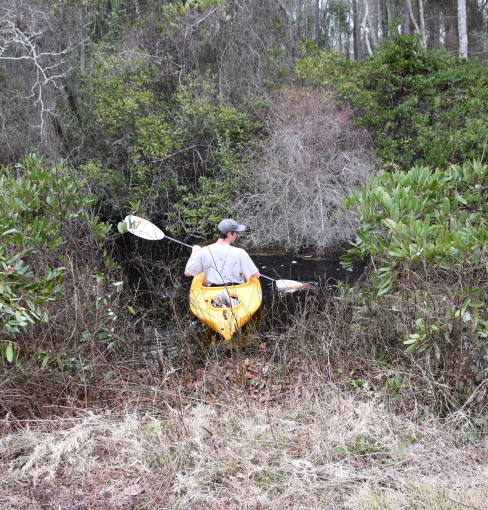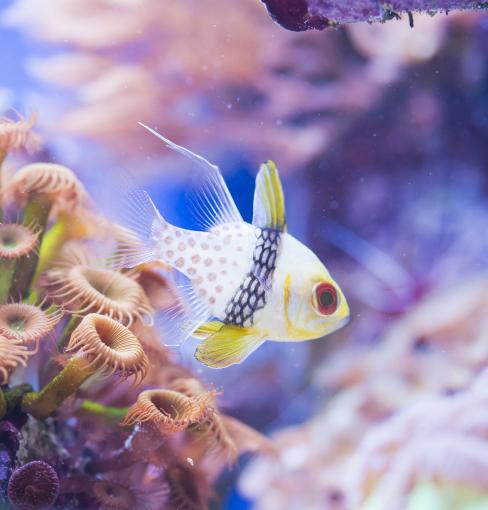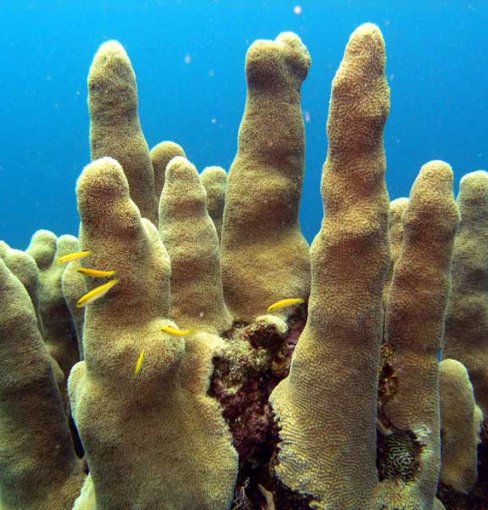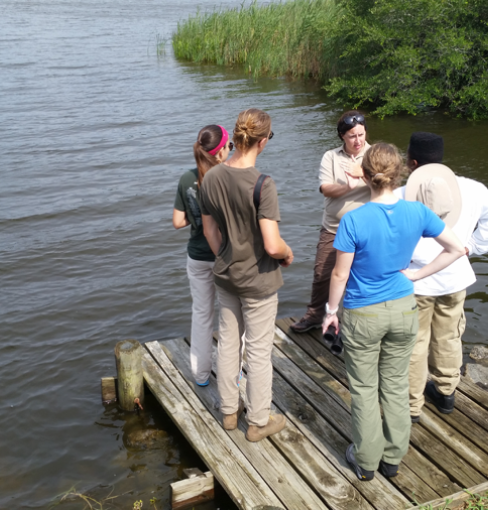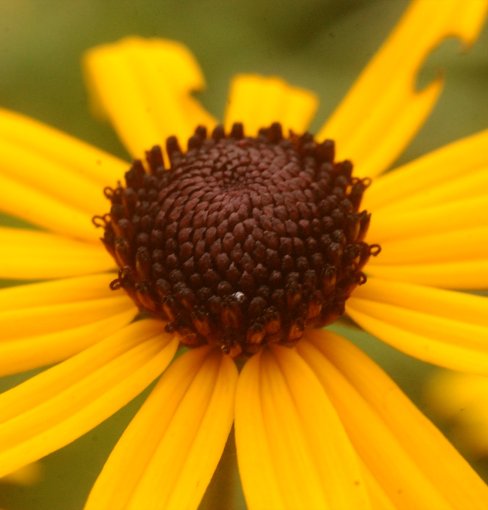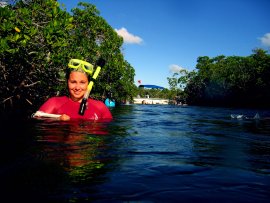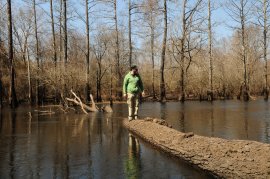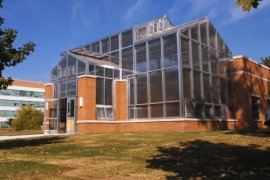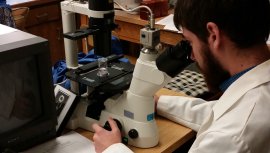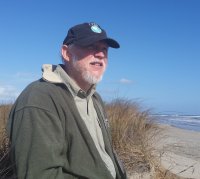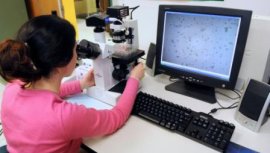Research Clusters
Evolutionary, Ecological & Organismal Biology
Aquatic Facility
The Department of Biological Sciences' Aquatics Facility, completed in 2010, is housed on campus and is a modern facility providing over 6,000 ft2 of space for marine and freshwater research. The facility includes a large but dividable common room with natural lighting for large tanks, five separate experimental laboratories including two biosafety II laboratories suitable for aquatic disease research, a technician's office, two bathrooms with showers, and a field research preparation and processing room adjacent to a loading dock. The entire facility is supplied with dechlorinated freshwater, treated seawater, and a low pressure air system for holding aquatic animals and plants.
Blackwater Ecological Preserve
The Blackwater Ecologic Preserve borders the Blackwater River in Isle of Wight County, Virginia. Included on this 319 acre property are unique plant communities and some of the rarest species in the state of Virginia. Most important is the longleaf pine community which is the northernmost community of this type in the United States. In addition to the longleaf communities, the preserve's amazing diversity includes pocosins, river bluff, cypress swamp, old field, and riverine habitat.
Herbarium
The ODU Herbarium provides a well curated collection of vascular plants and bryophytes for use in teaching, research, and public service. Major emphasis is placed on development of excellent representation of all taxa in the local flora (southeastern Virginia and northeastern North Carolina), including the Dismal Swamp and the Blackwater Ecologic Preserve. Our herbarium represents the definitive collection of the regional flora, and is consulted by the Natural Heritage Program of the Commonwealth of Virginia. We also loan specimens to specialists in different parts of the country and the world. Due to our exchange program, the herbarium also has a good representation of genera of plants of the southeastern United States as well as representative orders on a worldwide basis. Specialized areas of interest include development of collections of both native and cultivated poisonous plants as well as strength in parasitic angiosperms. At present, the total number of mounted specimens is approximately 26,000. The teaching collection contains approximately 3,000 specimens.
Kaplan Orchid Conservatory
Built in 2008, the Arthur & Phyllis Kaplan Orchid Conservatory (KOC) primarily houses an orchid collection donated by the late Norfolk physician Dr. Arthur Kaplan and his wife, Phyllis Kaplan. The facility now houses over 1,100 individual orchid plants and a diverse collection of tropical plants.
Phytoplankton Analysis Laboratory
The Phytoplankton Analysis Laboratory (PAL) has been monitoring phytoplankton populations, algal blooms, and potential toxin producing species in Chesapeake Bay and several of its major tributaries since 1985. Since 1997, in a more extensive coverage of Virginia estuaries, phytoplankton water and sediment samples have been analyzed for Pfiesteria spp., Pfiesteria-like organisms (PLO), and other toxin producing algal species.













Faculty Emeriti
KNEELAND NESIUS
Associate Professor
knesius@odu.edu
Vector-Borne Diseases & One Health
Electron Microscopy Lab
The Electron Microscopy Laboratory is equipped for transmission election microscopy (including X-ray diffraction, scanning transmission electron microscopy/STEM and X-ray microanalysis) and scanning electron microscopy. Complete specimen preparation equipment and supplies are available for a wide variety of biological and nonbiological specimens. A well-equipped darkroom provides a complete environment for negative development and print or slide making. The laboratory director and laboratory specialist are available for consultation in experimental design and electron microscopic technique. The laboratory has extensive experience in processing many types of specimens for a variety of users at the university and from the community.




Microbiology & Immunology
Our Research at a Glance
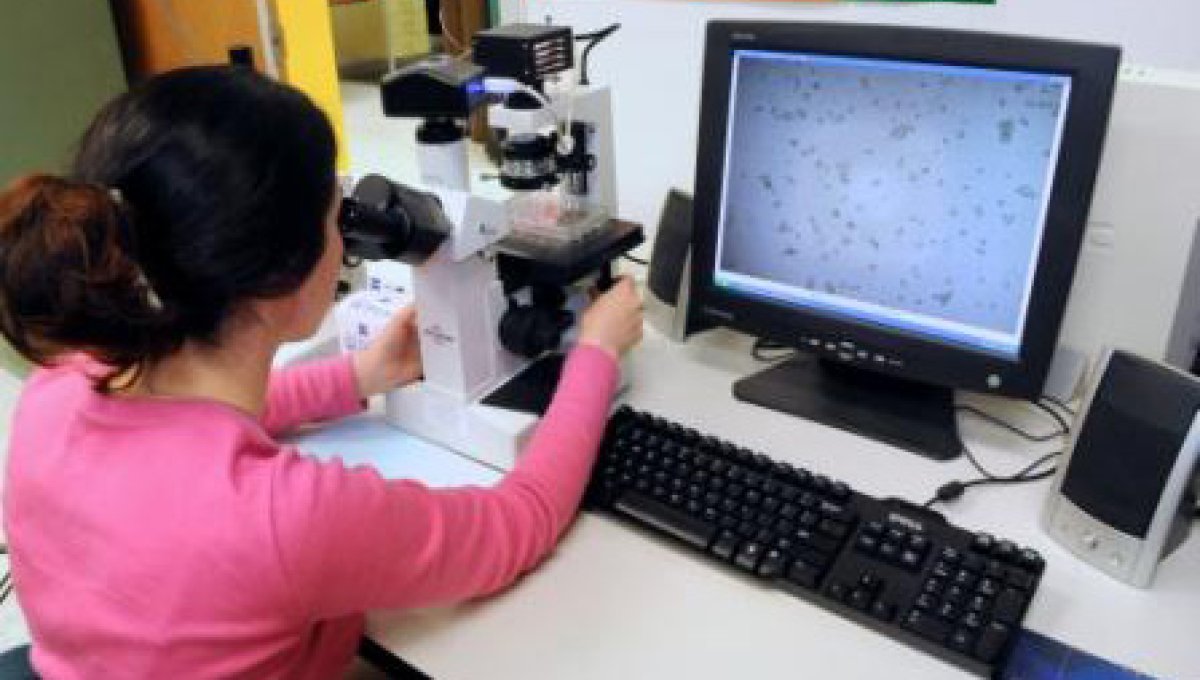
Soheila Mohades views a cell with microscopy.
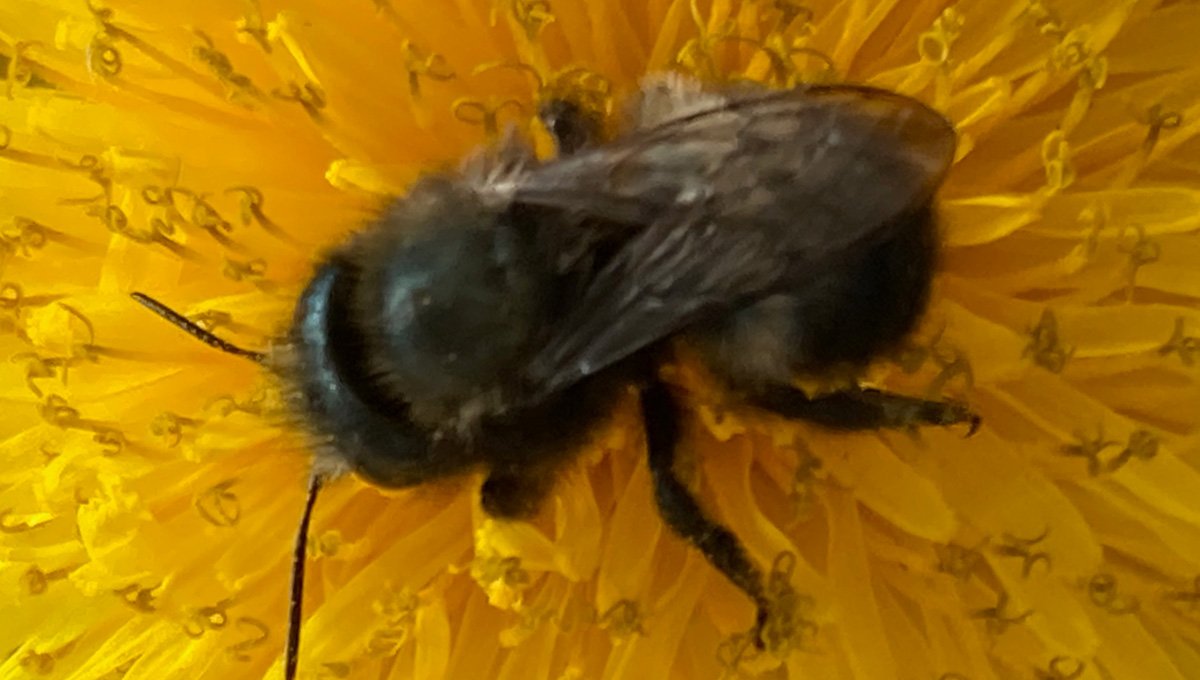
Osmia lignaria, a native blue orchard mason bee, an important insect for pollination"
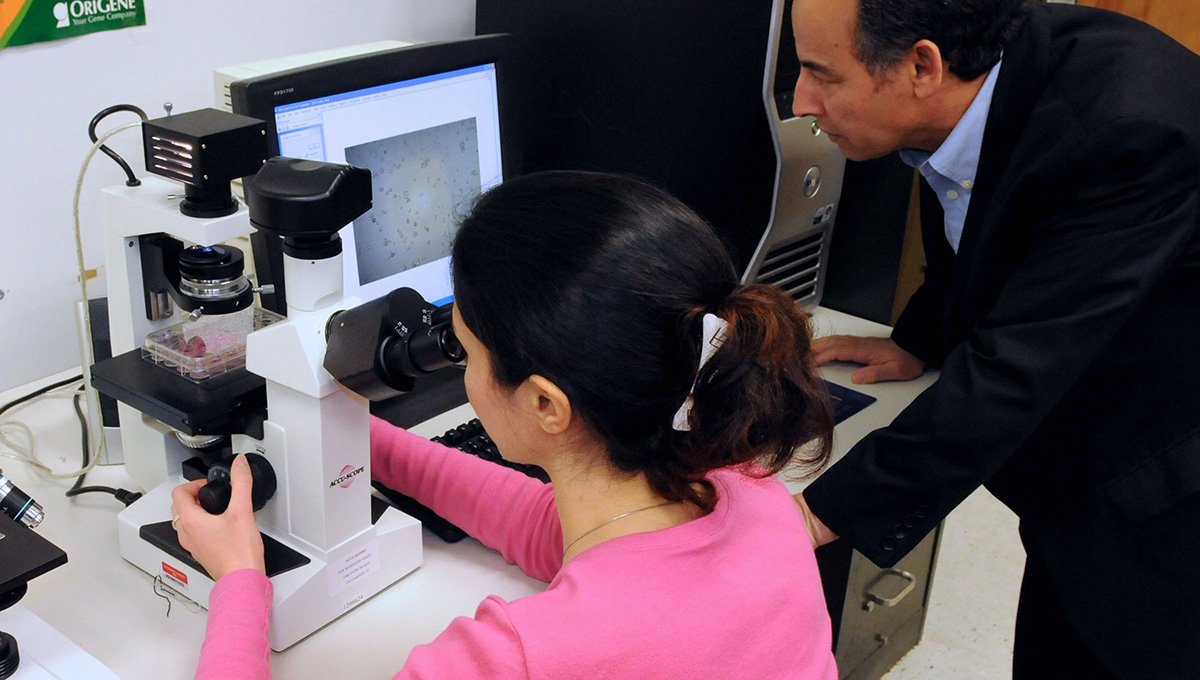
ODU plasma medicine Mounir Laroussi at work with his Ph.D. student Soheila Mohades.
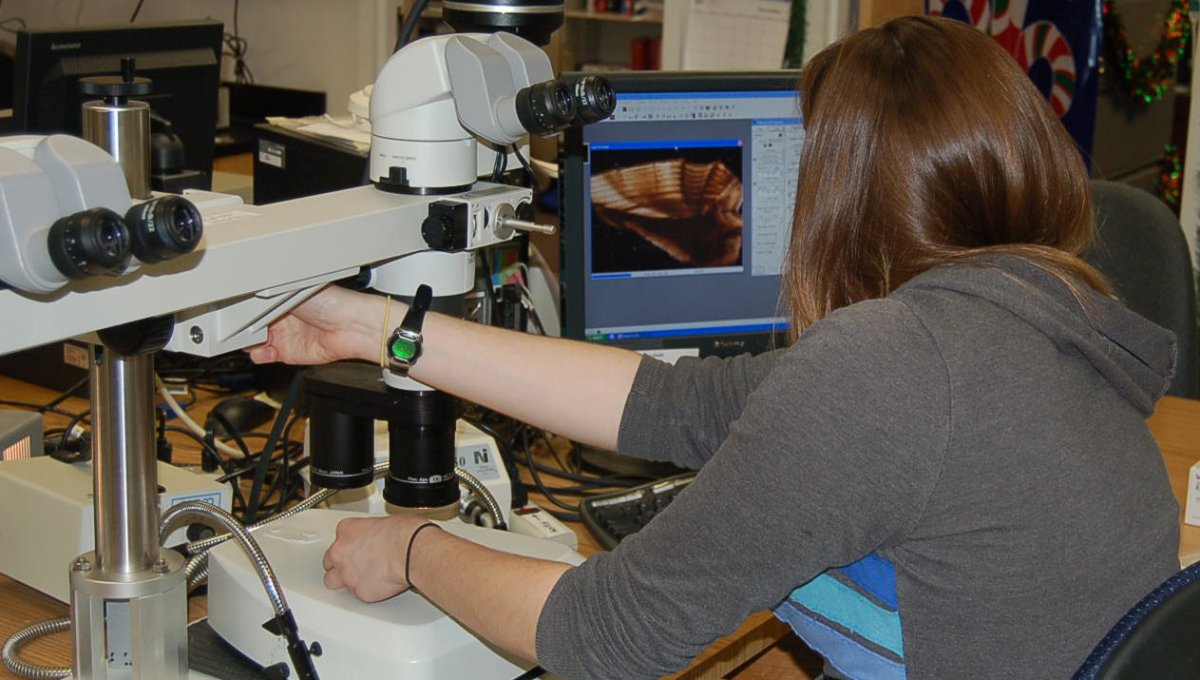
Woman inspecting a prepared otolith section in a piece of equipment.
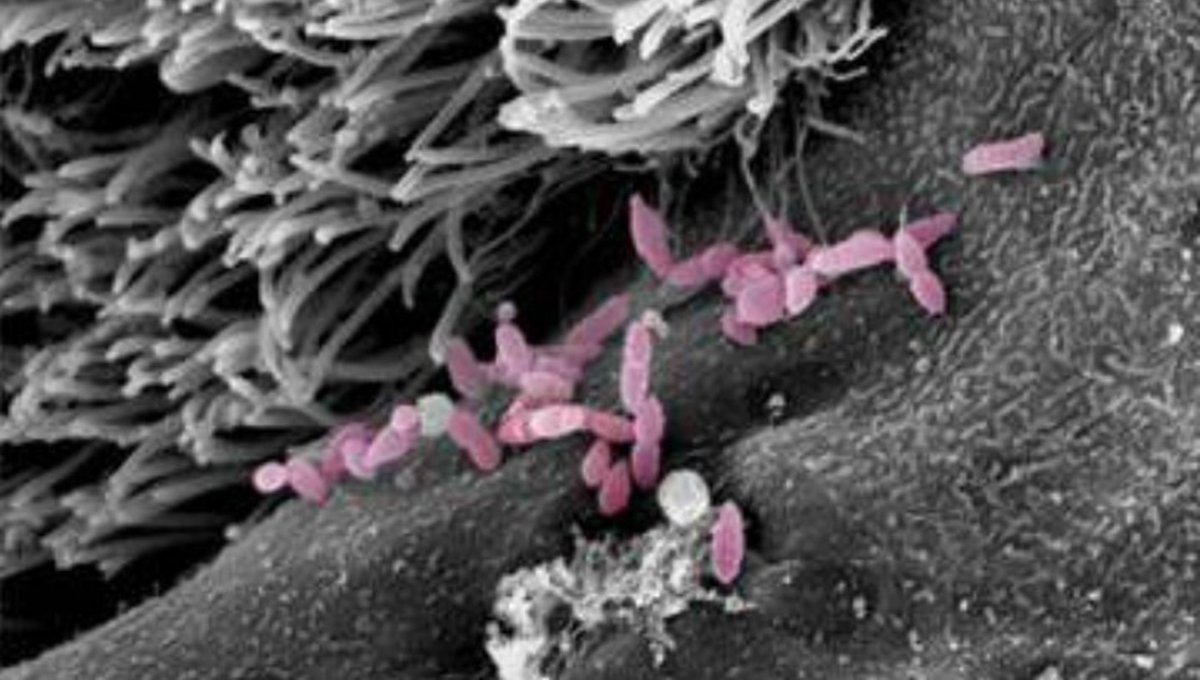
Primary human respiratory tissue co-cultured with nontypeable Haemophilus influenzae. False-colored scanning electron micrograph of bacteria (pink) on EpiAirway™ tissues (gray and white).
Soheila Mohades views a cell with microscopy.
Osmia lignaria, a native blue orchard mason bee, an important insect for pollination"
ODU plasma medicine Mounir Laroussi at work with his Ph.D. student Soheila Mohades.
Woman inspecting a prepared otolith section in a piece of equipment.
Primary human respiratory tissue co-cultured with nontypeable Haemophilus influenzae. False-colored scanning electron micrograph of bacteria (pink) on EpiAirway™ tissues (gray and white).



